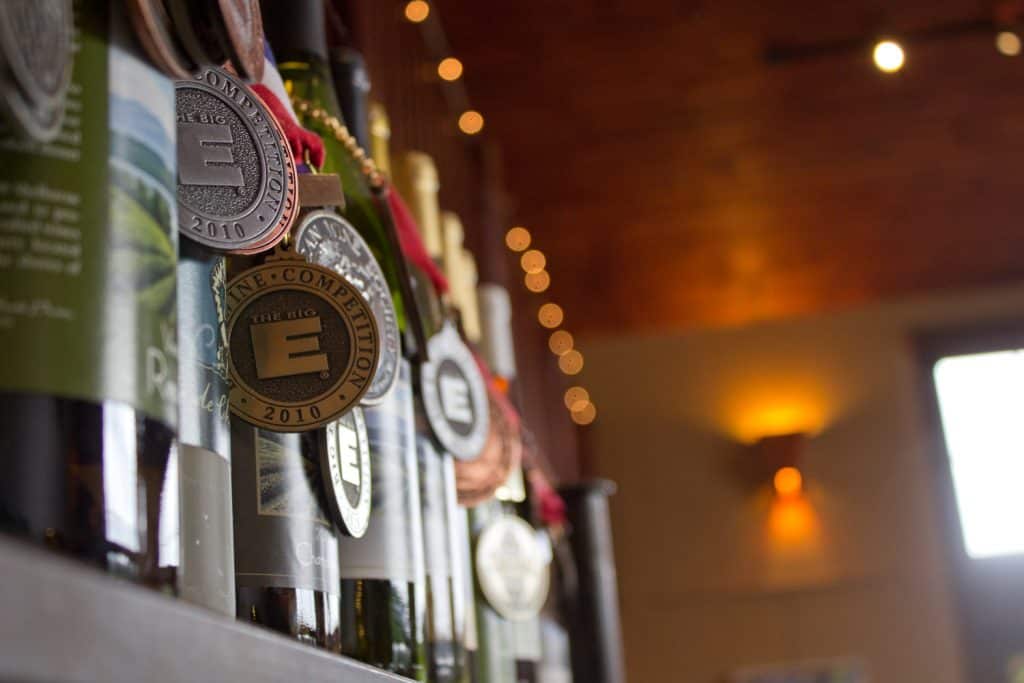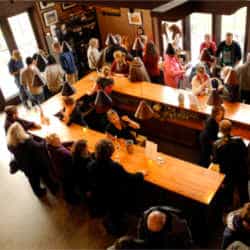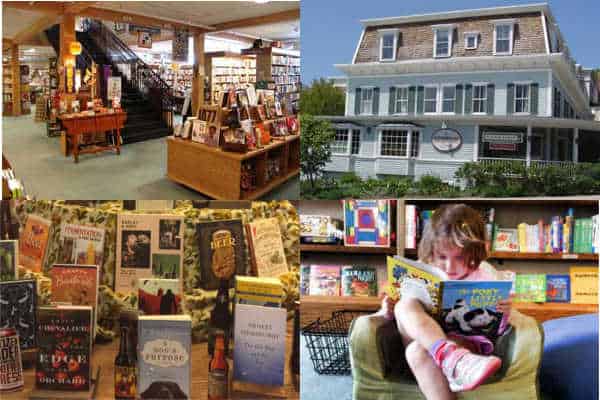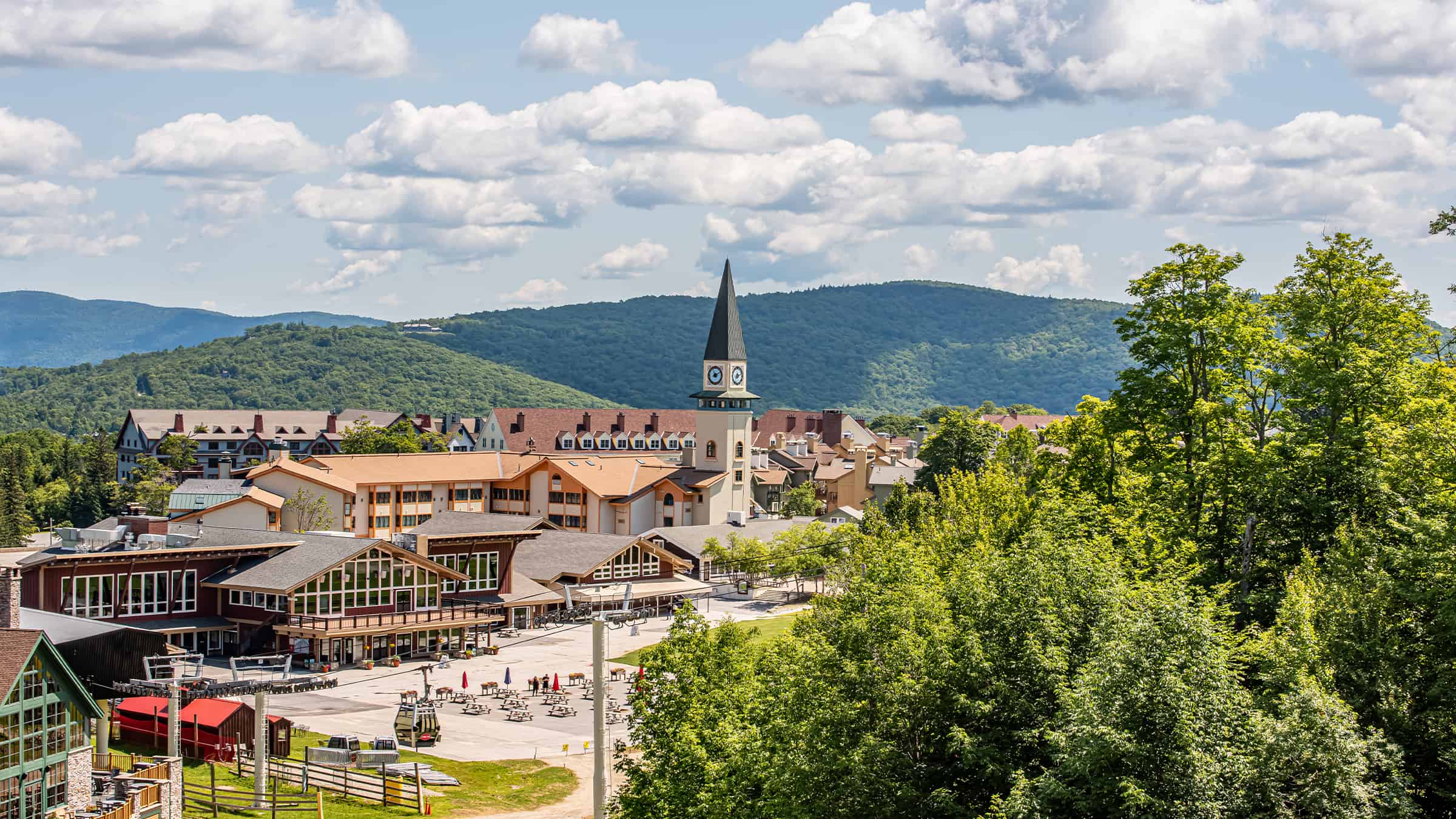Maple Syrup. Farm to table dining. Apple orchards. Craft Beer. All world-class products easily associated and warmly linked to Vermont. But wine and vineyards? You better believe it. With over 15 vineyards currently calling the Green Mountains home – and more joining them each year – Vermont is quickly becoming a destination for oenophiles from around the globe. We spoke with Shelburne Vineyard’s Director of Marketing and Events, Gail Albert about the coming harvest, the challenges of marketing a Vermont wine, and the camaraderie between the Vermont vintners.
Vermont.com // Vermont is known for many wonderful things, but a long growing season isn’t particularly one of them. What kind of grape can survive a Vermont winter?
Gail Albert // The first grapes we had planted were New York State hybrids, and they were grapes that did well in this region, but if it got to be 15 degrees below zero, they would lose their buds and we wouldn’t be able to have a crop. Then, in 2008, some new varieties were developed in the mid-West that were hearty down to 30 degrees below zero. When those grapes began to be available we knew that we could make some amazing wines in this region. With these types of grapes we’re even able to make a mid-winter ice harvest and produce a whole new variety of wine.
VTC // How is the relationship between the vineyards? Are techniques and processes treated as closely guarded secrets?
GA // It’s very interesting because Ken [Gail’s husband and founder of Shelburne Vineyard] had worked all his life in Corporate America, where it was very secretive and the sort of world where if you leave, you lose the keys that same day. But the wonderful change for us has been that we’re all learning together. Years ago, when we first started growing grapes in Vermont, even before there were a great number of vineyards, those of us who were doing this were like pioneers, always getting together and tasting each others wines or talking about different varieties of grapes.
Because everyone’s land is different; the terroir of the grapes affects the way the grapes taste, the winemaker affects the way the grape tastes, the weather and micro-climates of each vineyard – everything changes so we don’t really need to be secretive because we’re each making a different product even if we’re making the same type of wine. It’s been an extremely nice camaraderie and very helpful and instrumental in each vineyards growth.

VTC // What are people’s reactions to Vermont made wines?
GA // Well, I think that we would like to put ourselves in the position to be as successful in the world picture as Vermont brewers have been. Vermont beers are really on the map and Vermont wines haven’t fully gotten there yet. We’re working towards that by having better and better wines each year, but I think that there is something about beer that people are more willing to try the craft varieties. People just don’t think of Vermont as a place for wine yet. There are pockets that people think of as wine regions; Europe, Australia, California, and maybe parts of Virginia and Ontario – and we’re trying to expand upon that mindset.
The challenge for us here in Vermont is that we can’t grow the grapes that people are familiar with for the most part. We grow a little bit of Riesling, which is a pure European variety of grape, that people are very familiar with. But that’s probably the only pure European variety that can thrive here. We make some amazing varieties that people would compare to their current favorites, but we hesitate to say “This is like a Pinot Noir” or “This is like a Chardonnay” because we want people to appreciate it for what it is. On the other hand, people come here and they’re looking for what they’re familiar with. One of the reasons that we decided that we really needed to open a tasting room is because if people have the chance to taste them, they can really fall in love with new wonderful varieties and broaden their horizons.

The Fall harvest has just recently begun at Shelburne Vineyards – definitely get in touch to learn more about the process and even to join in. From what we understand the Winter Ice Harvest is a beautiful event as well, not to be missed – just slightly colder. Make sure to stay tuned to blog.vermont.com as we have several articles coming up that will follow the winemaking process throughout the year at Shelburne Vineyard.
—
Shelburne Vineyard is located at 6308 Shelburne Rd. (Rt. 7) in Shelburne, Vermont. They are open seven days a week from 11AM-6PM and offer tours every hour from 1PM-4PM. It’s always great to see folks who are this passionate and knowledgeable about their craft. Stop in and say hi, you’ll be glad you did.

